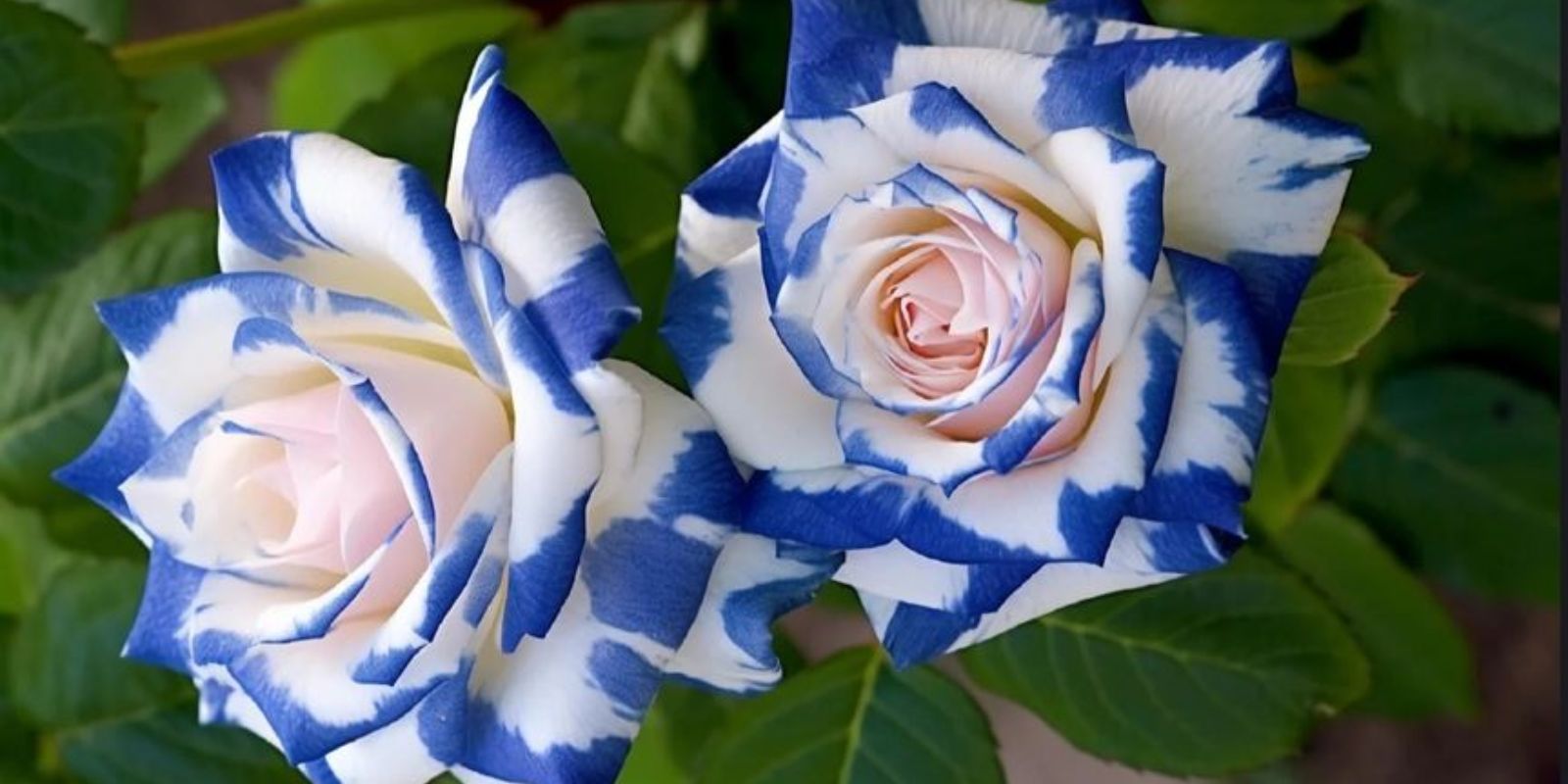The Variegated Blue Rose, with its enchanting blend of blue hues and distinctive variegation, stands out as a striking addition to any garden. This rose variety offers a unique twist on traditional roses, blending beauty with a touch of rarity. Here’s a comprehensive guide to help you successfully grow and care for these captivating flowers.
Introduction
The Variegated Blue Rose (Rosa spp.) is celebrated for its unusual blue color and stunning variegated patterns. Unlike typical roses, which come in shades of red, pink, white, and yellow, the blue rose is the result of extensive hybridization and selective breeding. It represents a rare and exciting choice for gardeners looking to add a splash of color and uniqueness to their landscape.
Growing these roses can be incredibly rewarding with the right approach. Whether you’re an experienced gardener or a novice, understanding the specific needs of the Variegated Blue Rose will help ensure a thriving, beautiful plant.
1. Choosing the Right Location
Sunlight: Variegated Blue Roses flourish in full sunlight. Choose a location that receives at least 6 hours of direct sunlight each day. Morning sun with some afternoon shade is ideal, as it helps prevent the intense afternoon heat from scorching the leaves.
Soil: The soil should be well-draining and rich in organic matter. Roses prefer loamy soil that retains moisture but drains excess water efficiently. Avoid heavy clay or sandy soils that do not support healthy root growth.
Space: Provide ample space for the rose to grow. Variegated Blue Roses can reach up to 3-4 feet in height and width. Space plants 2-3 feet apart to ensure they have enough room to develop fully without crowding.
2. Planting Your Rose
Timing: The best time to plant Variegated Blue Roses is in early spring or late fall. Planting during these periods allows the rose to establish its root system before the heat of summer or the cold of winter.
Preparation: Prepare the planting site by digging a hole twice as wide and as deep as the root ball of your rose. This allows the roots to spread out and establish themselves more easily.
Planting: Place the rose in the center of the hole, ensuring that the graft union (the bulge where the rose variety is grafted onto the rootstock) is level with the soil surface. Backfill with soil and gently tamp it down to remove air pockets. Water thoroughly after planting to help settle the soil around the roots.
3. Watering and Fertilizing
Watering: Consistent watering is crucial for the health of your Variegated Blue Rose. Water deeply once a week, allowing the soil to dry slightly between waterings. Avoid overhead watering, as this can promote fungal diseases. Instead, water at the base of the plant.
Fertilizing: Feed your rose with a balanced rose fertilizer in early spring and mid-summer. Follow the manufacturer’s instructions for the correct amount. Over-fertilization can lead to excessive foliage growth at the expense of flowers, so be cautious.
Organic Options: For an eco-friendly approach, consider using compost or well-rotted manure as a natural fertilizer. These organic options enrich the soil and provide essential nutrients.
4. Pruning and Maintenance
Pruning: Regular pruning is essential for maintaining the health and shape of your Variegated Blue Rose. Prune in late winter or early spring before new growth begins. Remove any dead, diseased, or damaged wood. Trim back long or crossing stems to promote an open, airy structure that improves air circulation and sunlight penetration.
Deadheading: Remove spent flowers to encourage continuous blooming. Deadheading also prevents the plant from expending energy on seed production, allowing it to focus on new blooms.
Mulching: Apply a layer of organic mulch around the base of the rose to help retain moisture, suppress weeds, and regulate soil temperature. Keep the mulch a few inches away from the stem to prevent rot.
5. Pest and Disease Management
Pests: Monitor your rose regularly for pests such as aphids, spider mites, and Japanese beetles. Use insecticidal soap or neem oil for treatment if needed. Introducing beneficial insects like ladybugs can also help control aphid populations.
Diseases: Common rose diseases include black spot, powdery mildew, and rust. Prevent fungal diseases by ensuring good air circulation around the plant and avoiding overhead watering. If diseases occur, treat them promptly with appropriate fungicides and follow good garden hygiene practices.
General Health: Regularly inspect the plant for signs of stress or disease. Healthy, well-cared-for roses are more resilient to pests and diseases.
6. Winter Care
Protection: In colder climates, protect your Variegated Blue Rose during winter by covering the base of the plant with mulch or compost. In extreme cold areas, consider wrapping the plant with burlap or using a frost cloth to shield it from freezing temperatures.
Pruning: Avoid heavy pruning in late fall, as this can stimulate new growth that may be damaged by frost. Instead, wait until early spring to prune and remove any winter damage.
7. Enjoying Your Roses
With proper care, your Variegated Blue Rose will reward you with stunning blooms and vibrant color. The unique blue and variegated patterns make it a focal point in any garden or landscape design. Enjoy the beauty of these roses and share their splendor with friends and family.
Have you successfully grown Variegated Blue Roses? Share your experiences, tips, and advice in the comments below! Your insights can help fellow gardeners achieve similar success.
In conclusion, the Variegated Blue Rose is a remarkable plant that adds a touch of elegance and rarity to any garden. By following these guidelines, you’ll create a thriving environment for your rose and enjoy its beautiful, unique blooms for years to come.

